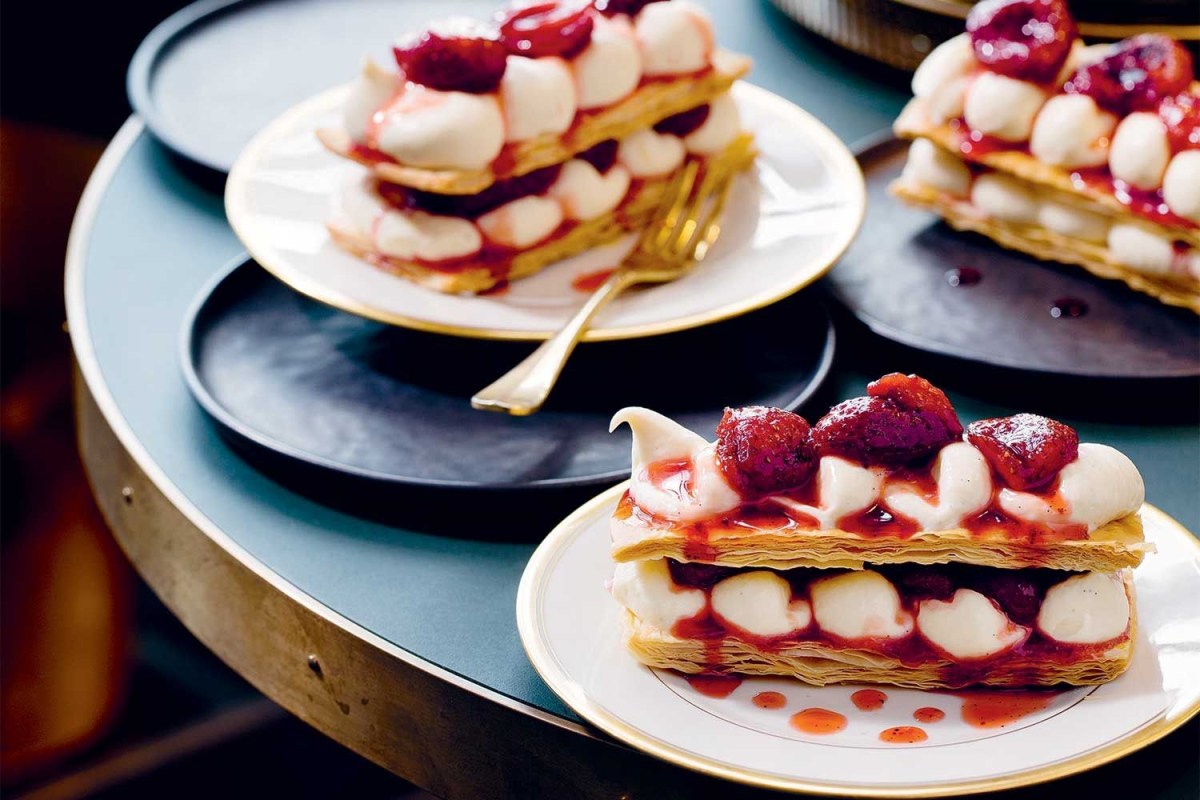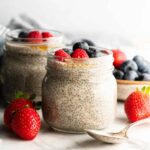Imagine the delicate whisper of a flaky, egg-free croissant, the vibrant blush of a raspberry macaron, the satisfying crackle of a crème brûlée – all crafted without a single egg. This exploration delves into the enchanting world of French-inspired desserts and pastries, reimagined for those with egg allergies or dietary preferences. We’ll uncover the secrets behind achieving the same exquisite textures and flavors using innovative techniques and clever substitutions, transforming classic recipes into delightful egg-free masterpieces.
From mastering the art of egg-free puff pastry to exploring regional variations and creating modern, innovative recipes, this journey promises a delectable adventure. We’ll navigate the challenges of eggless baking, providing detailed instructions, ingredient substitutions, and visually appealing results. Prepare to be inspired by the possibilities, as we unveil a world of deliciousness that’s both inclusive and undeniably French.
Classic French Egg-Free Desserts

Creating delightful French pastries and desserts without eggs requires clever substitutions and a deep understanding of texture and flavor. This exploration delves into the adaptation of three iconic French treats – macarons, madeleines, and crème brûlée – showcasing how similar textures and tastes can be achieved without relying on eggs. The subtle shifts in the final product highlight the ingenuity of egg-free baking.
Egg-Free Adaptations of Classic French Desserts
The following table compares the original recipes of three classic French desserts with their egg-free counterparts, focusing on key ingredient substitutions and the resulting textural and flavor differences. Understanding these changes is crucial for successfully replicating the essence of these beloved treats without eggs.
| Dessert | Original Recipe (Key Ingredients) | Egg-Free Adaptation (Key Ingredient Substitutions) | Resulting Differences |
|---|---|---|---|
| Macarons | Aged egg whites, almond flour, powdered sugar | Aquafaba (chickpea brine), almond flour, powdered sugar, additional stabilizers (e.g., xanthan gum) | Slightly less chewy texture, potentially a less glossy shell; flavor remains largely unchanged. |
| Madeleines | Eggs, butter, flour, sugar | Applesauce or mashed banana, melted coconut oil or vegan butter, flour, sugar, baking powder (to compensate for lack of egg leavening) | Slightly denser texture, potentially a less pronounced hump; flavor profile subtly altered depending on the fruit puree used. |
| Crème Brûlée | Egg yolks, cream, sugar, vanilla | Silken tofu or cornstarch slurry, cream, sugar, vanilla; Agar-agar can also be used as a setting agent. | Slightly softer custard texture, a slightly less rich flavor; the caramelized sugar topping remains unchanged. |
Visual Descriptions of Egg-Free French Desserts
The following descriptions highlight the visual appeal of egg-free versions of these classic desserts, emphasizing color, texture, and presentation.
Egg-Free Macarons: Imagine a pastel-hued collection of delicate macarons, their shells exhibiting a smooth, slightly matte finish instead of the high gloss of their egg-based counterparts. The colors are vibrant and consistent, showcasing the meticulous piping technique. A gentle pressure reveals a slightly less chewy interior, but the delicate almond flavor remains perfectly balanced with the chosen filling, perhaps a vibrant raspberry coulis or a creamy vegan chocolate ganache, nestled between two perfectly formed shells.
Egg-Free Madeleines: These madeleines present a golden-brown hue, slightly less intense than their egg-containing cousins. Their characteristic hump is perhaps a little less pronounced, but their texture is still inviting – a tender crumb with a slightly moist interior. They are arranged elegantly on a plate, dusted with a light coating of powdered sugar, creating a subtle, elegant visual effect. The overall presentation evokes rustic charm and warmth.
Egg-Free Crème Brûlée: The egg-free crème brûlée is a study in creamy contrasts. The custard itself is a pale, ivory color, smooth and satiny in appearance. The surface is crowned with a glistening layer of perfectly caramelized sugar, its dark amber hues contrasting beautifully with the pale custard beneath. The crackle of the sugar topping promises a delightful textural contrast, and the subtle vanilla aroma wafts from the elegant ramekin, promising a comforting and luxurious treat.
Adapting Classic Recipes
Mastering egg-free French desserts requires a nuanced understanding of egg function in baking. Eggs contribute to structure, richness, leavening, and emulsification. Replacing them successfully necessitates careful consideration of these roles and the selection of appropriate substitutes that mimic these properties. The goal is not simply to remove the egg, but to achieve a comparable final product in terms of texture and flavor.
Egg replacers, while offering viable alternatives, often necessitate recipe adjustments to compensate for their unique properties. Some might yield a slightly drier or denser result, while others may impact the overall sweetness or browning. Careful experimentation and understanding the limitations of each substitute are crucial for consistent success.
Egg Replacers and Their Properties
Choosing the right egg replacer depends heavily on the specific dessert and the role the eggs play in the original recipe. Different replacers offer varying degrees of success, and some work better in certain applications than others. The following list details five common egg replacers, outlining their strengths and weaknesses.
- Applesauce: Provides moisture and a slight sweetness. Best suited for cakes and muffins where moisture is key, but may slightly alter the flavor profile. One large egg is generally replaced with ¼ cup unsweetened applesauce.
- Mashed Banana: Adds moisture and sweetness, similar to applesauce. Works well in cakes and quick breads, but can result in a more pronounced banana flavor. One large egg is generally replaced with ¼ cup mashed ripe banana.
- Flaxseed Meal: A good binder, offering some structure. Mix 1 tablespoon of flaxseed meal with 3 tablespoons of water and let it sit for 5 minutes to form a gel-like consistency. This mixture substitutes for one egg, and works well in denser baked goods.
- Chia Seeds: Similar to flaxseed meal, chia seeds form a gel when mixed with water, acting as a binder. Use the same ratio as flaxseed meal (1 tablespoon chia seeds to 3 tablespoons water). Chia seeds offer a slightly milder flavor than flaxseed.
- Commercial Egg Replacers: These are readily available and formulated specifically to mimic the properties of eggs. Follow the package instructions for the correct substitution ratio. These products often offer consistent results, but may contain additives.
Egg-Free Crème Brûlée
This recipe adapts the classic Crème Brûlée, a rich and creamy custard, to be completely egg-free. The key is using a combination of cornstarch and cream to create a smooth, set custard.
Ingredients:
- 1 cup heavy cream
- ½ cup granulated sugar
- 2 tablespoons cornstarch
- 1 teaspoon vanilla extract
- Pinch of salt
Instructions:
- In a medium saucepan, whisk together the cornstarch and sugar until well combined. This ensures a smooth mixture and prevents lumps from forming in the custard.
- Gradually whisk in the heavy cream, ensuring no lumps remain. The cream adds richness and helps create a smooth texture.
- Place the saucepan over medium heat, stirring constantly, until the mixture thickens and comes to a simmer. Continuous stirring is essential to prevent scorching and ensure even thickening.
- Remove from heat and stir in the vanilla extract and salt. The vanilla extract enhances the flavor, while the salt balances the sweetness.
- Strain the mixture through a fine-mesh sieve into a bowl to remove any lumps or cornstarch granules. This ensures a silky smooth texture.
- Divide the custard evenly among six ramekins. Cover with plastic wrap, pressing it directly onto the surface of the custard to prevent a skin from forming.
- Refrigerate for at least 4 hours, or preferably overnight, to allow the custard to set completely. This chilling time is crucial for achieving the desired firm texture.
- Before serving, sprinkle a thin layer of granulated sugar over the top of each ramekin. Use a kitchen torch to caramelize the sugar, creating a crisp, brittle topping. If you don’t have a kitchen torch, you can broil the ramekins in the oven for a few minutes, watching carefully to prevent burning.
Ingredient Substitution Rationale:
The cornstarch acts as a thickening agent, replacing the egg’s role in setting the custard. The heavy cream provides the richness and creaminess typically achieved with eggs and yolks. The sugar contributes sweetness and helps with the caramelization process. The vanilla extract enhances the flavor profile. No direct egg replacement is used; instead, the recipe relies on the properties of the other ingredients to achieve the desired texture and flavor.
The world of French-inspired egg-free desserts and pastries is far richer and more diverse than one might initially imagine. Through careful technique, clever substitutions, and a dash of culinary creativity, the seemingly impossible becomes deliciously attainable. We’ve journeyed through classic recipes, regional variations, and innovative creations, demonstrating that the absence of eggs doesn’t diminish the joy of indulging in these exquisite treats. Embrace the challenge, experiment with the techniques, and discover the delightful rewards of crafting elegant, egg-free French pastries that are both beautiful and unbelievably delicious.
FAQ Guide
Can I freeze egg-free pastries?
Yes, many egg-free pastries freeze well. Wrap them tightly in plastic wrap and then foil before freezing for optimal freshness.
What’s the best way to store egg-free desserts?
Storage depends on the dessert. Most should be refrigerated, but some, like certain cookies, can be stored at room temperature in an airtight container.
Are all egg replacers created equal?
No, different egg replacers have varying properties. The best choice depends on the specific recipe and desired outcome. Some provide better binding, while others excel at adding moisture or richness.
How do I achieve a crispy crust without eggs?
Techniques include using a high-fat content in the dough, blind baking, and ensuring proper oven temperature and baking time. A light brushing of milk or cream before baking can also help.


